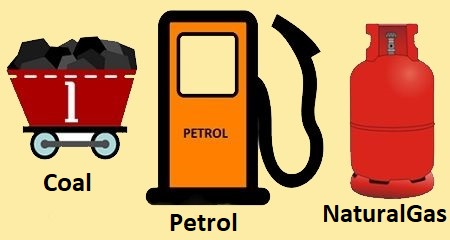Conventional Sources of EnergyEnergy is one of the most important factors for the growth of the economy of a country. It plays an important role in social, economic, agriculture, industry and various other sectors. 
If we talk about the resources of energy available on our planet Earth, we have many resources. Some of these are available in limited quantity and some are not limited in quantity. Accordingly, they are divided into two broad categories: conventional (also known as non-renewable) and non-conventional (also known as renewable) sources of energy. What is a conventional source of energy?The source of energy which cannot be reused after using it once is referred to as conventional sources of energy. They are also known as non-renewable sources of energy. Examples include coal, petroleum, natural gas, and nuclear energy. As the name suggests, the energy that we get from non-renewable sources will run out or could not be replenished in our lifetime or many centuries. The major portion of non-renewable sources comprises fossil fuels like coal, petroleum and natural gas wherein carbon is the main element. This is the reason that the time during which fossil fuels are formed is called the carboniferous period. As a result of their extensive usage, their reserves have been greatly depleted. Here is a detailed description of conventional sources of energy. 1. Coal:It is a fossil fuel and the most abundant conventional source of energy. This energy resource could last for another 200 years. It is a sedimentary rock that looks black or brown. The formation of coal involves a very long process and it forms from the remains of plants that convert into lignite over a long period of time and then lignite converts into anthracite again over a long period of time. Coal offers various uses such as heating the house, as a fuel for boilers and steam engines and for electricity generation in thermal power plants. It accounts for nearly 70% of total commercial energy consumption in the country. 2. Oil or PetroleumOil is used extensively among all conventional sources of energy. It is basically a mixture of hydrocarbons. India ranks third in the world in terms of oil consumption. The resources of oil are very limited in India, so we have to import it on a large scale. In 2018, the estimated crude oil reserve in India was around 600 million tonnes. India imports 70% of the total required oil from Iran, Saudi Arabia, the USA, and more. 3. Fuel WoodsRural people extensively use fuelwood for cooking purposes. This wood is obtained from trees, plants, bushes, etc. However, the availability of fuelwood is reduced to a greater extent due to deforestation. The energy resources can be improved by planting more trees on degraded forest land, barren land and other such unused lands. 4. Natural GasIt is a mixture of hydrocarbons such as methane, ethane, butane, and more. It is widely used in the household sector for cooking purposes. In India, natural gas is extracted by ONGC and nearly 450 billion cubic meters of natural gas reserves are available in the country. Around 75% of this natural gas reserves are present in Bombay high and the rest of it is present in Gujarat, Andhra Pradesh, and Assam. If we talk about its consumption, around 40% of natural gas is consumed in the fertilizer sector and 30% in electricity generation and nearly 10% is used as a cooking gas (LPG). The best thing about it is that it does not cause air pollution, unlike other fossil fuels. India imports most of its natural gas from Iran. 5. Nuclear PowerIt is a clean conventional source of energy wherein a small amount of radioactive substance can produce a large amount of energy. It emits fewer greenhouse gases as compared to other sources like coal during electricity generation. The widely used radioactive substances to produce nuclear energy are Uranium, Thorium, Plutonium, and more. As of now, there are around 17 nuclear power plants in India, most of which are located in the western regions of the country. The contribution of nuclear energy to total energy production is less than 4 percent. The govt. of India is installing various nuclear power plants to increase its present capacity of nuclear power generation. Although, it causes less pollution, during accidents high amount of radiation may be produced and nuclear waste that is left behind is also radioactive and harmful. How are fossil fuels formed?All fossil fuels are formed through a similar method. Their formation started hundreds of millions of years ago when Earth had a different land, covered with shallow seas and swampy forests. The main vegetation was algae, plankton and plants at that time. These living entities produced the energy required by them through photosynthesis. Later, when they died, they moved to the bottom of the sea and other such water bodies. The dead plants had energy stored within them. With time, the dead plants were crushed under the seabed, and rocks and sediment were loaded on top of them, creating high pressure and heat underground. Under such conditions, the dead plants and their residues turned into fossil fuels such as coal, natural gas, petroleum, and more. As of now, there are lots of huge underground reservoirs of these conventional sources of energy throughout the world. Some countries have more reservoirs such as Saudi Arabia, Iran, Russia, etc. These countries usually export a large amount of crude oil to many countries and their economy is largely dependent on these fossil fuel reserves. Advantages of Conventional Sources of Energy
Disadvantages of Conventional Sources of Energy
Next TopicNon-Conventional Sources of Energy
|
 For Videos Join Our Youtube Channel: Join Now
For Videos Join Our Youtube Channel: Join Now
Feedback
- Send your Feedback to [email protected]
Help Others, Please Share










